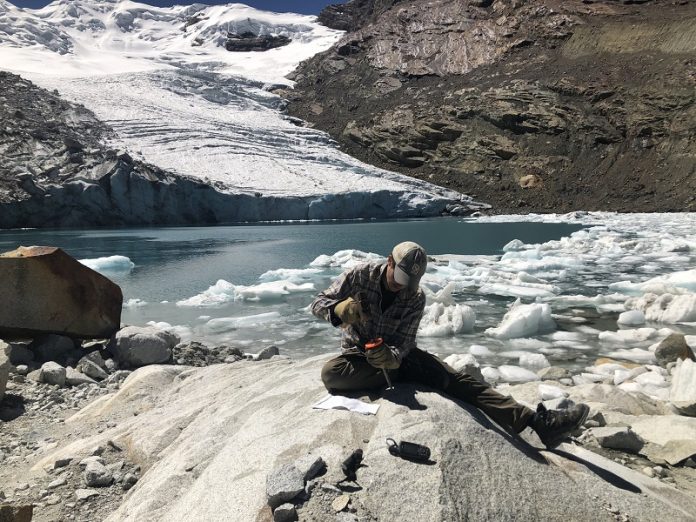
Researchers from Boston College have discovered that glaciers in the Andes Mountains are melting much faster than expected.
Their study, published in the journal Science, shows that tropical glaciers have shrunk to their smallest size in over 11,700 years, indicating that the tropics have warmed beyond historical levels.
Associate Professor Jeremy Shakun and his team analyzed rock samples from four Andean glaciers.
They found that these glaciers have retreated significantly, revealing rocks that were previously covered in ice. This rapid retreat has occurred much faster than scientists predicted.
“We have strong evidence that these glaciers are smaller now than at any time in the past 11,000 years,” said Shakun. He explained that the main cause of this retreat is rising temperatures rather than other factors like less snowfall or changes in cloud cover.
The glaciers’ retreat signals that the tropics have warmed into a new era called the Anthropocene, characterized by significant human impact on the environment. This rapid melting serves as a warning for glaciers worldwide, suggesting they might be retreating faster than previously thought.
Shakun and his team wanted to understand how the size of tropical glaciers today compares to their size over the last 11,000 years. They traveled to Colombia, Peru, and Bolivia to measure the chemistry of bedrock recently uncovered by melting glaciers.
They looked for two rare isotopes—beryllium-10 and carbon-14—that accumulate in bedrock when exposed to cosmic radiation from space.
By measuring the concentrations of these isotopes, the researchers determined how long the bedrock had been exposed in the past. “It’s like how a sunburn can tell you how long someone was out in the sun,” Shakun explained. The absence of these isotopes in the 18 bedrock samples they measured indicates that these rocks had not been exposed since the glaciers formed during the last ice age.
Twenty years ago, researchers found 5,000-year-old plant remains at the Quelccaya Ice Cap in Peru, indicating that the ice cap had been larger than its current size for that entire period. This suggested that modern ice retreat was abnormally large. Shakun and his team used a more comprehensive technique to study a larger number of glaciers.
Shakun’s team has been using this method to study glaciers along the entire American Cordillera, from Alaska to Tierra del Fuego. They published results from North American glaciers last year and plan to release findings from southern South America soon.
“Once we have all this data, we can create a global perspective on the current state of glacier retreat,” Shakun said. This research underscores the urgent need to address climate change as glaciers continue to melt at an alarming rate, impacting ecosystems and water supplies worldwide.



